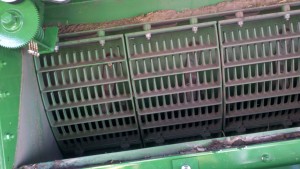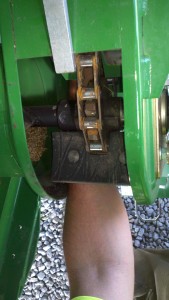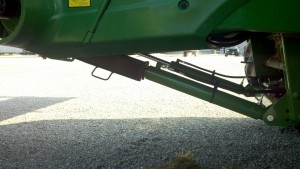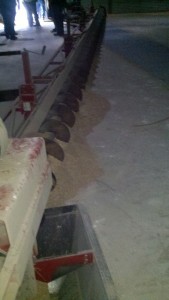 It really is amazing how unpredictable the fire service is because yesterday a bunch of us trained at a huge grain elevator complex with no wind and 90 degree temperatures, then later in the evening we were on Lake Erie in the fire boat searching for a missing person. The importance of constantly adding to your first due tackle box through training will keep you prepared for the next call. The rest of this post includes some of the training scenarios we had set up at the farm rescue training hosted by the Northern Ohio Fools and Ehove Career Center. Also check out more on farm rescue from a previous post here.
It really is amazing how unpredictable the fire service is because yesterday a bunch of us trained at a huge grain elevator complex with no wind and 90 degree temperatures, then later in the evening we were on Lake Erie in the fire boat searching for a missing person. The importance of constantly adding to your first due tackle box through training will keep you prepared for the next call. The rest of this post includes some of the training scenarios we had set up at the farm rescue training hosted by the Northern Ohio Fools and Ehove Career Center. Also check out more on farm rescue from a previous post here.
FIRST DUE TACKLE ON FACEBOOK, CLICK “LIKE”

Mike from FirstEnergy giving a demonstration on electrical hazards to start the day. Lots of power in the farm environment.
COMBINE HAZARDS
We specifically asked some questions of the farmer/firefighters at the training about what the most likely entrapments are on the new equipment used today. Many of the entrapments are caused by moving parts, so if the farmer tries to clear a jam or fix part of the machine without shutting it down we may get the call. It is really important to figure out how the machine moves and how it can be taken apart. Below are a few different scenarios.

The batteries on this John Deere are located in the box with the yellow label. A master shut-off switch is on the side of the box.

This is the side (rotor). The cover panel has been removed and the grates you see can also be removed if the material becomes jammed. An arm could be easily pulled in if the machine is not shut down to save time.

If the tailings elevator becomes jammed with material this could be a possible place for entrapment.

You can see the safety in place when the bean header is in the up position. One brother told a story about the header coming down on top of a farmer when the safety was not in place and the hydraulic line was disconnected.

If the rock trap on the front of the combine becomes jammed this may be another place for entrapment if the machine is not shut down.
FIRST RESPONDER JACK BY HIGH-LIFT
ANHYDROUS TANK ROLL-OVER PINNING
Here are a few pictures of a roll-over pinning scenario involving an anhydrous tank. A tank of this size weighs about 1,800 pounds empty and about 6,000 pounds when full. Remember the material in this tank is a liquid and can shift easily. Some things to think about; is the tank leaking, is the tank on a slope, is the ground soft or hard.

This single jack technique was successful because the tank was empty. The vertical lifting eye on the tank held, but bent during this operation. If the tank was full, the lift probably would not have worked.

Firefighters used jacks and a chain cradle to lift the tank and free the victim. Stabilization thoughts include using step-chocks and wedges. Make sure to crib the voids as the lift is performed. If the tank is full of material, the weight may stress a single jack.
BIN SWEEP
The bin sweep in the picture below is about 50′ long. One of the brothers in the class said that when the bin sweep gets hung up on smaller models, farmers may kick the sweep. One possible entrapment could occur if the auger grabs the farmers pant leg.
Some of the other training stations included shutting off an anhydrous tank leak, grain bin rescue with grain tubes, and some basic rope work. Check out more pictures on the FDT Facebook Page.
Pass it on!
 First Due Tackle Pass It On – Firefighter, Rescue & Extrication Training
First Due Tackle Pass It On – Firefighter, Rescue & Extrication Training







